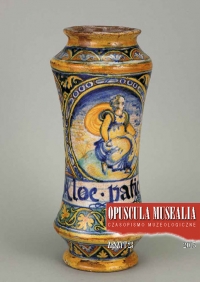μ-XRPD investigations of pigments in the 17th-century panel paintings from Gdańsk and the northern region of Poland
μ-XRPD investigations of pigments in the 17th-century panel paintings from Gdańsk and the northern region of Poland
Author(s): Alicja Rafalska-Łasocha, Marta Grzesiak-Nowak, Justyna Olszewska-Świetlik, Bożena Szmelter-Fausek, Wiesław ŁasochaSubject(s): Museology & Heritage Studies, Visual Arts, 17th Century
Published by: Wydawnictwo Uniwersytetu Jagiellońskiego
Keywords: conservation science; identification of pigments; X-ray powder micro-diffraction (μ-XRPD); analysis of cross-sections;
Summary/Abstract: This study was focused on identifying the components of ground and paint layers in several panel paintings which were created during the 17th century in Gdańsk (northern Poland). Due to the fragile nature of the paintings, very small samples of paint and ground layers were taken and mounted in synthetic resin, to prepare cross-sections that could be used in several nondestructive studies, such as X-ray powder micro-diff raction (μ-XRPD). White, yellow, red, blue and green layers were examined. Studies revealed that the white paint layers contained calcite, cerrusite and/or hydrocerrusite; the yellow layers contained lead tin yellow type I; blue layers contained azurite and/or lazurite. The detection of μ-Al2O3 in the red layer suggests the presence of an organic dye in a base containing aluminium. The obtained results clearly prove the importance and usefulness of X-ray powder diff raction techniques in investigations of objects of cultural heritage.
Journal: Opuscula Musealia
- Issue Year: 2015
- Issue No: 23
- Page Range: 21-32
- Page Count: 12
- Language: English

